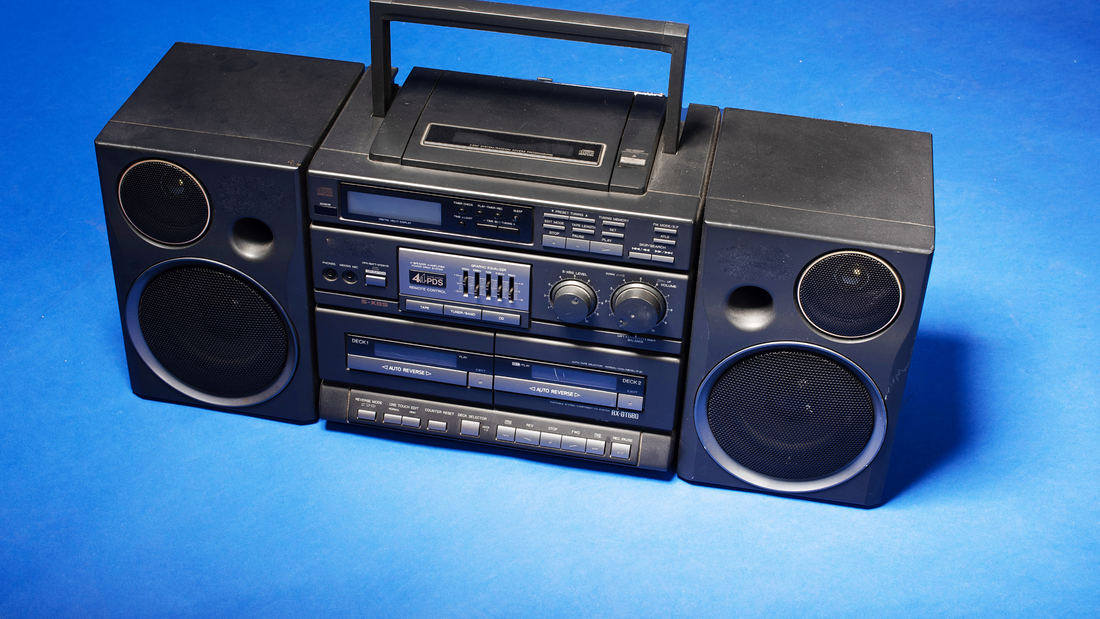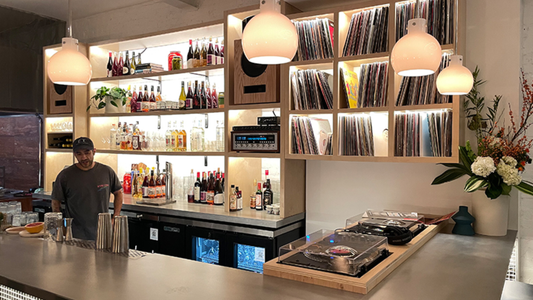
The First Time You Hear Silence in Stereo
By Rafi Mercer
The first time you hear silence in stereo, it stops you.
It is not the music itself that shocks you — not the saxophone riff or the piano chord, not even the sheer clarity of the sound — but the pause between them.
A gap you never noticed before, now alive with detail. A silence that is not empty, but textured. It feels like stepping into a room you thought you knew, only to discover a hidden door.
This happens, for many, in a listening bar. You enter expecting good music, maybe better sound than usual, but what you encounter is something else entirely. You sit down, order a drink, watch the selector lower the stylus. The record begins. The system is tuned so well that every note lands not in front of you but around you. The soundstage is wide, instruments placed as if in space. And then — the pause. A breath before the horn returns. A rest in the piano phrase. A gap you thought was silence, now revealed as stereo.
It is astonishing the first time because most of us have not been taught to hear it. On laptops, phones, earbuds, the gaps collapse, squashed into background. Compression flattens air, rooms blur detail, noise fills everything else. The silence vanishes, treated as absence rather than presence. Yet in the right conditions, you discover it anew. Silence is not nothing. It is sound’s architecture.
Acoustics explain the sensation. A well-tuned room reveals not only the notes but the space between them. The ear locates instruments by the tiny delays between left and right, by the reflections off walls, by the reverberation of a hall captured on tape. In stereo, silence is never blank. It carries spatial cues, the trace of the room, the air that still vibrates. You hear not only the musician but the space they occupy. The silence tells you the size of the stage, the shape of the studio, the distance between microphone and wall.
That is why the first time you hear silence in stereo feels so shocking. It is not a gap. It is presence. It is the shape of the performance revealed.
But beyond acoustics, the moment teaches something deeper. It shows that listening is not only about notes, but about pauses. About restraint. About attention. In a culture that pushes more, faster, louder, silence is undervalued. Yet in music, it is the pause that makes the phrase. In life, it is the pause that makes the memory.
The Japanese kissaten understood this instinctively. Their devotion was not only to fidelity but to silence. The room was disciplined so that the listener could hear the space between notes. Miles Davis once said it was the notes he didn’t play that mattered. The kissa took that philosophy into architecture. And today’s listening bars inherit it, offering rooms where silence is not an interruption but a feature.
The effect is not only technical but emotional. When you hear silence in stereo for the first time, you also feel time differently. The record holds you. A phrase lands, the room breathes, the next phrase comes. You slow down, matching your rhythm to the groove. The silence teaches patience. It reminds you that music is not content but ceremony.
I remember vividly the first time it happened to me. It was in Tokyo, years ago, in a small bar with shelves so high they seemed to touch the ceiling. The system was vintage, valves glowing, speakers angled carefully. The selector placed a record I thought I knew — Bill Evans, Waltz for Debby. I had heard it countless times before, at home, in stores, even on CD through cheap headphones. But that night, sitting in silence with strangers, I heard something else. The piano struck a phrase, then paused, and in that pause I heard the room. The club where it was recorded came alive: the chatter of glasses, the faint cough, the air of the Village Vanguard in 1961. The silence revealed not emptiness but presence. It was like discovering the negative space in a painting, suddenly as vital as the brushstrokes.
Since then, I have chased that sensation. Not always in Japan. In Berlin, in New York, in London, in Mexico City, I have sat in bars where silence has been allowed to frame the sound. Each time, the effect is the same: a reminder that listening is not consumption, but attention.
It is educational in the truest sense. Once you hear silence in stereo, you cannot un-hear it. You notice it elsewhere. In a concert hall, in a church, in the hum of your own living room after the record ends. You begin to understand acoustics not as science but as experience — that the size of a room shapes the music, that the placement of speakers alters perspective, that fidelity is not about gear alone but about how space and silence interact.
And it is inspiring. Because if silence can sound so rich, what else have we overlooked? How many other gaps have we mistaken for absence when they are in fact presence? How much of life have we rushed past, chasing the next note, the next phrase, the next distraction?
The listening bar exists to restore this awareness. It is not nostalgia, nor trend. It is a reminder of what music can be when given silence as its frame. It is a classroom disguised as a bar, a sanctuary disguised as nightlife. It teaches without instruction, simply by making you sit still, lower your voice, and hear.
And the lesson is always the same. The silence between notes is as important as the notes themselves. Fidelity is not only about sound, but about space. Listening is not passive, but active.
The first time you hear silence in stereo, you understand.
Rafi Mercer writes about the spaces where music matters. For more stories from Tracks & Tales, subscribe, or click here to read more.







